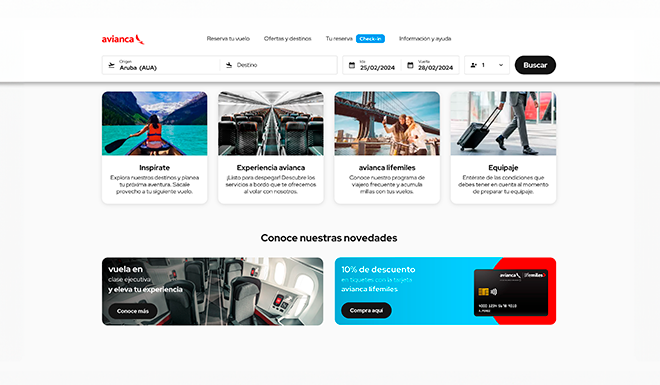- Inicio
- Blog
- Data strategy
- How to design interactive data visualizations
How to design interactive data visualizations
In today's data-driven world, marketers are constantly looking for effective ways to communicate complex information to their target audience. One powerful tool that has emerged to meet this demand is interactive data visualizations. Combining the art of design with the science of data analysis, interactive data visualizations offer a dynamic and engaging way to present information, allowing users to explore, interpret and extract meaning from large data sets.
In this article, we'll dive into the art and science behind designing interactive data visualizations that captivate and inform. We'll explore the importance of choosing the right visualization techniques, discuss the role of interactive elements in increasing user engagement, and examine the fundamental design principles that contribute to the effectiveness of data visualizations. Whether you're a marketer looking to convey complex insights to customers, a data analyst aspiring to communicate findings to a broader audience, or a designer looking to create visually impactful experiences, this article will provide valuable insights and practical tips to help you design interactive data visualizations that leave a lasting impression.
So, if you're ready to unlock the potential of storytelling through data and captivate your audience through visually immersive experiences, let's dive into the world of interactive data visualizations and discover the keys to creating compelling and meaningful visual narratives.
Selection of suitable visualization techniques
When it comes to designing interactive data visualizations, one of the crucial decisions you must make is selecting the right visualization technique that best suits your data. Different types of data require different representation methods to effectively communicate underlying patterns, trends, and relationships. Let's look at some key considerations and steps to help you choose the right visualization technique for your data.
- Understand your data: Before delving into visualization options, it is essential to have a thorough understanding of your data. Start by examining its nature, structure and the ideas you want to convey: Is your data categorical or numerical; are you analyzing trends over time or comparing different categories? By identifying the key characteristics and objectives of your data, you can narrow down the choices of visualization techniques that will be most effective.
- Explore the types of visualization: The world of data visualization offers a wide range of techniques, each with its strengths and limitations. Familiarize yourself with common visualization types, such as bar charts, line graphs, scatter plots, pie charts, heat maps and more. Understand how each technique represents different types of data and what types of ideas they excel at. This exploration will provide you with a toolbox of options to choose from when designing your interactive visualization.
- Match visualization techniques to data attributes: Once you have a clear understanding of your data and have explored various visualization techniques, it is time to combine the attributes of your data with the appropriate visualization techniques. For example, if you want to compare the distribution of a categorical variable, a bar chart may be appropriate. On the other hand, if you are examining the relationship between two continuous variables, a scatter plot or line graph may be more appropriate. Consider the nature of your data, the patterns you wish to highlight, and the message you wish to convey when selecting the visualization technique.
Remember that the goal is to choose a visualization technique that not only accurately represents your data, but also engages and informs your audience. A well-chosen visualization technique will make it easier for users to understand the insights and draw meaningful conclusions from the data. By understanding your data, exploring visualization options, and matching techniques to data attributes, you can lay a solid foundation for creating impactful interactive data visualizations.
In the next section, we will discuss how incorporating interactive elements can enhance user engagement with your visualizations, taking them from static representations to immersive experiences that encourage exploration and deeper understanding.
Enhancing user engagement with interactive elements
Designing interactive data visualizations goes beyond the simple presentation of static graphics. It involves incorporating interactive elements that allow users to actively engage with the data, explore different perspectives, and gain insights through hands-on interaction. Let's dive into the key considerations and techniques for enhancing user engagement with interactive elements in your data visualizations.
- Intuitive user interface design: A well-crafted user interface (UI) design is critical to providing a smooth and intuitive experience. Consider the layout, navigation and overall visual design of your visualization. Aim for simplicity and clarity, ensuring that users can easily understand how to interact with the visualization. Use clear labels, intuitive icons and visual cues to guide users through interactive elements.
- Incorporation of filters and controls: Filters and controls allow users to dynamically manipulate the displayed data, allowing them to focus on specific subsets or explore different dimensions. Implement interactive filters, sliders, drop-down menus or checkboxes to give users control over the data they want to analyze. This flexibility allows them to customize their experience and drill down to the insights they are interested in.
- Interactive tracks and pop-up windows: Interactive hints and pop-up windows provide contextual information when users interact with specific data points or elements. By hovering over a data point or clicking on an element, users can access additional details or explanatory text. This interactive feature enhances comprehension and allows users to explore the nuances of the data without cluttering the main visualization.
- Animations and transitions: Animations and transitions can be used strategically to guide users' attention and highlight changes in data. Consider animating the transition between different states or time periods, emphasizing key ideas or highlighting relationships between data points. Thoughtful use of animations can create a visually engaging experience and make the storytelling process more captivating.
- Adaptable design for multiple devices: With the increasing use of mobile devices and different screen sizes, it is crucial to ensure that your interactive data visualizations are responsive and adapt to different platforms. Optimize the design for mobile devices, tablets and desktop computers, providing an optimal viewing and interaction experience across all screen dimensions.
By incorporating intuitive user interface design, interactive filters, pop-up cues, animations and adaptive design, you can create immersive and engaging experiences that empower users to interact with your data visualizations. Interactive elements not only increase user engagement, but also enable users to discover insights, understand more deeply and take
Design principles for effective data visualizations
Design is an essential element in creating effective data visualizations. A well-executed design not only improves the aesthetics of the visualization, but also helps convey information in a clear and understandable way. Here are some fundamental design principles to keep in mind when creating your interactive data visualizations.
- Visual hierarchy: Visual hierarchy refers to the visual organization of elements in a visualization to highlight the most important information and guide the user's attention. It uses techniques such as size, contrast and position to highlight key elements, such as headings, significant values or prominent trends. This helps users quickly interpret the information and understand the overall structure of the visualization.
- Simplicity and clarity: Keep your data visualization as simple and clear as possible. Eliminate any unnecessary elements that may distract or confuse the user. Use simple colors and shapes to represent data, avoiding excessive use of graphic embellishments. Make sure labels and annotations are legible and strategically placed to facilitate understanding.
- Consistency: Consistency is key to creating a cohesive, easy-to-follow visualization. Use a consistent color palette throughout the visualization and maintain uniform alignment and visual structure. Make sure interactive elements have a consistent look and feel throughout the visualization. Consistency helps users develop an intuitive understanding of how to interact with the visualization and makes it easy to compare different parts of the data.
- Strategic use of color: Color plays a key role in communicating information in a visualization. Use color deliberately to represent different categories, highlight important elements or visualize variations in data. However, be careful not to overload the visualization with too many colors, which can cause confusion. Select an appropriate color palette and make sure that the colors used are accessible to all users.
- Accessibility: Design your data visualizations to be accessible to all users, including those with visual or cognitive disabilities. Use a high-contrast color scheme and ensure that labels and text are legible to all. Provide textual alternatives or descriptions for visual elements, allowing users who use screen readers to understand the information equivalently.
By following these design principles, you will be able to create effective interactive data visualizations that are visually appealing, understandable and accessible to your audience. Applying these principles along with careful selection of visualization techniques and incorporation of interactive elements will enhance the user experience and maximize the impact of your data visualizations.
Conclusion
In summary, designing interactive data visualizations is a key skill for marketers who want to communicate complex information effectively. By choosing the right visualization techniques, enhancing user engagement with interactive elements, and following fundamental design principles, you can create impactful data visualizations that captivate your audience and allow them to explore and understand the data in a meaningful way.
Careful selection of visualization techniques ensures that data is represented in a clear and understandable way, while the incorporation of interactive elements enhances user engagement and allows them to interact and explore the data at their own pace. In addition, design principles such as visual hierarchy, simplicity, consistency, strategic use of color and accessibility ensure that visualizations are attractive, easy to understand and accessible to all.
By designing effective interactive data visualizations, you can tell persuasive stories and convey complex ideas in a clear and concise manner. Interactive data visualizations offer a powerful tool for communicating information in a visually impactful way, allowing your audience to understand and draw meaningful conclusions from the data presented.
As you venture into the world of interactive data visualization design, always remember to consider your data, explore different visualization techniques, enhance user engagement with interactive elements, and apply the right design principles. With practice and attention to detail, you will be able to create interactive data visualizations that stand out in the marketing landscape and captivate your audience, giving them an immersive experience and a deep understanding of the data presented.
So get creative, experiment and harness the power of interactive data visualizations to propel your marketing strategy to the next level!



